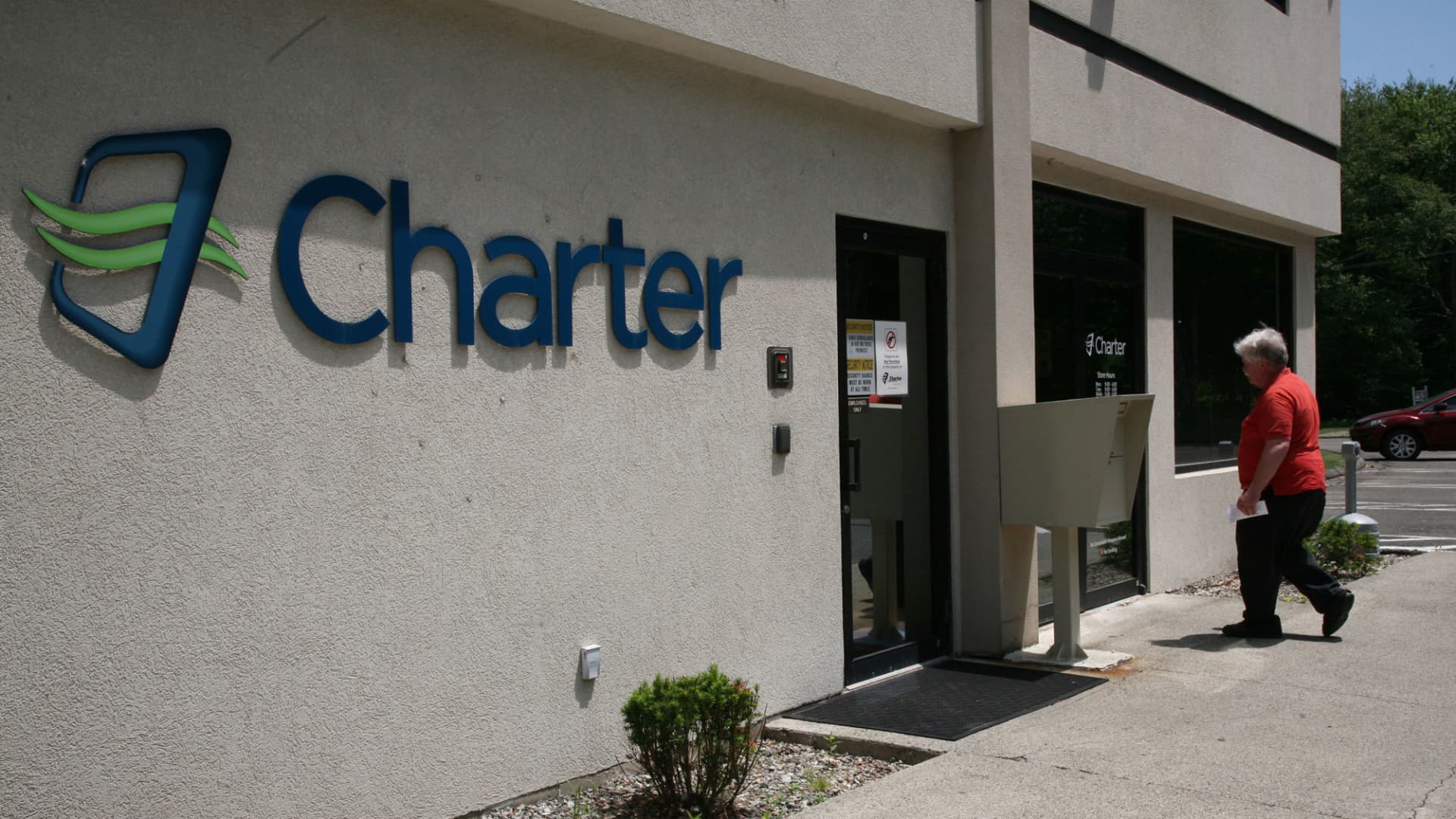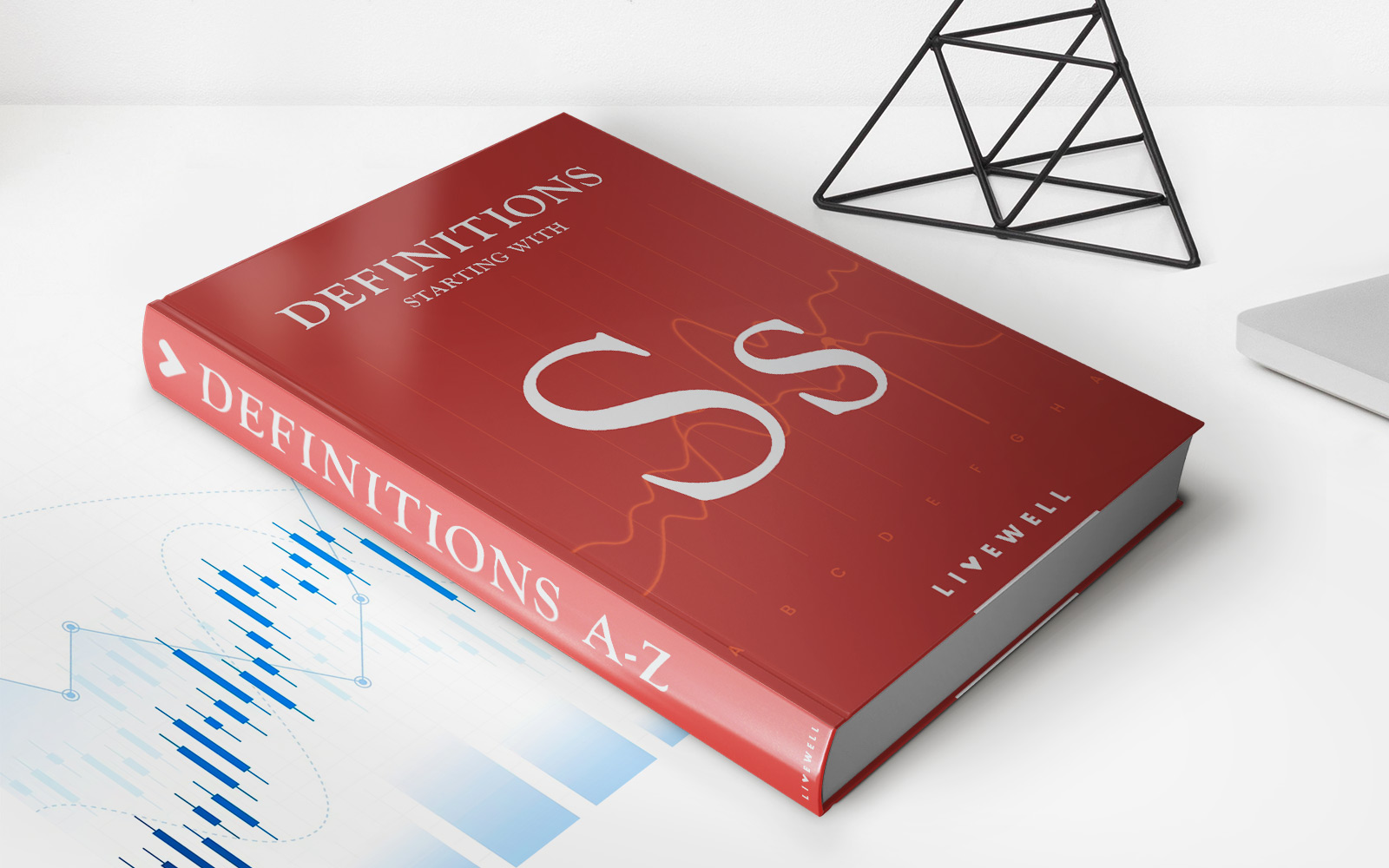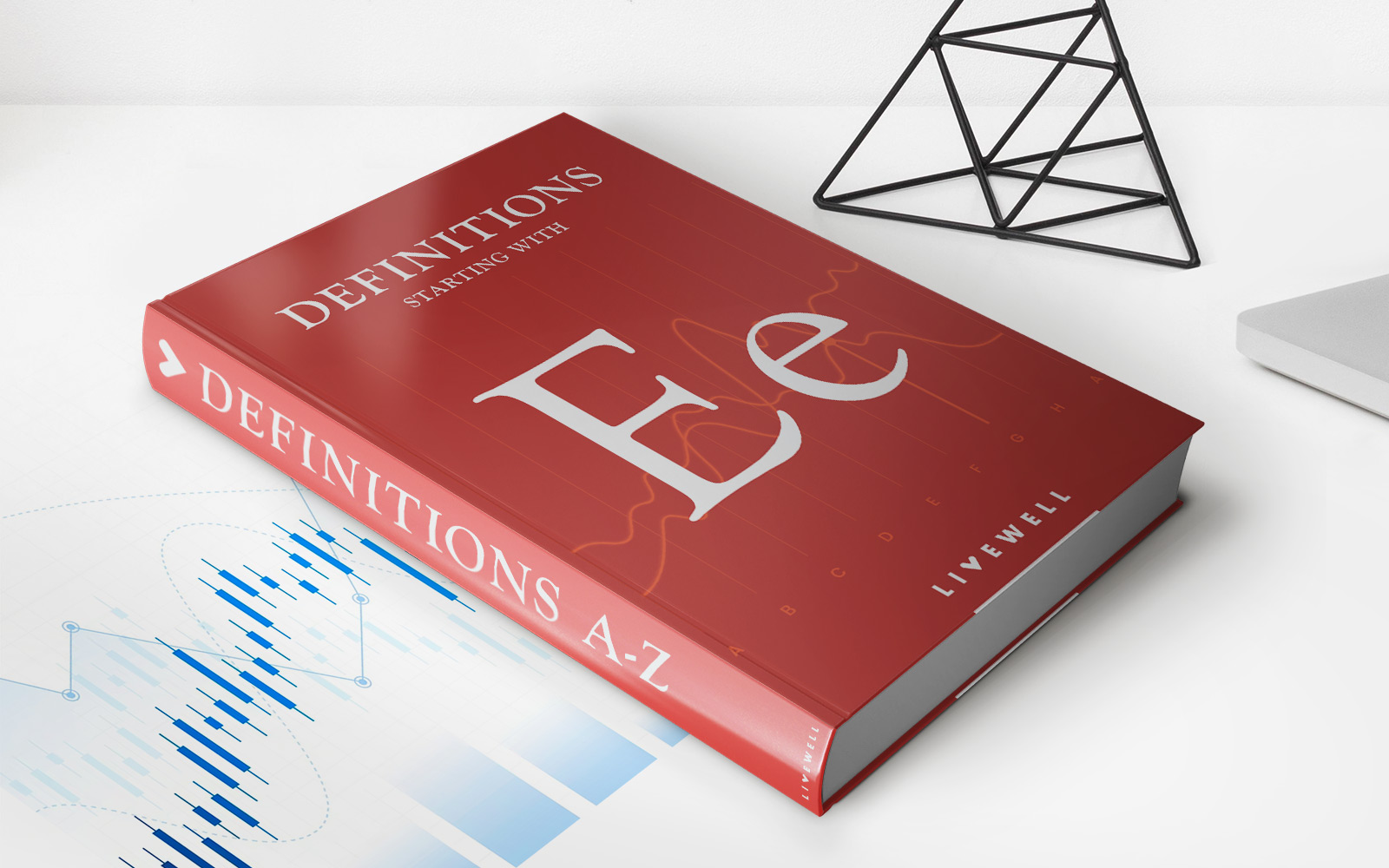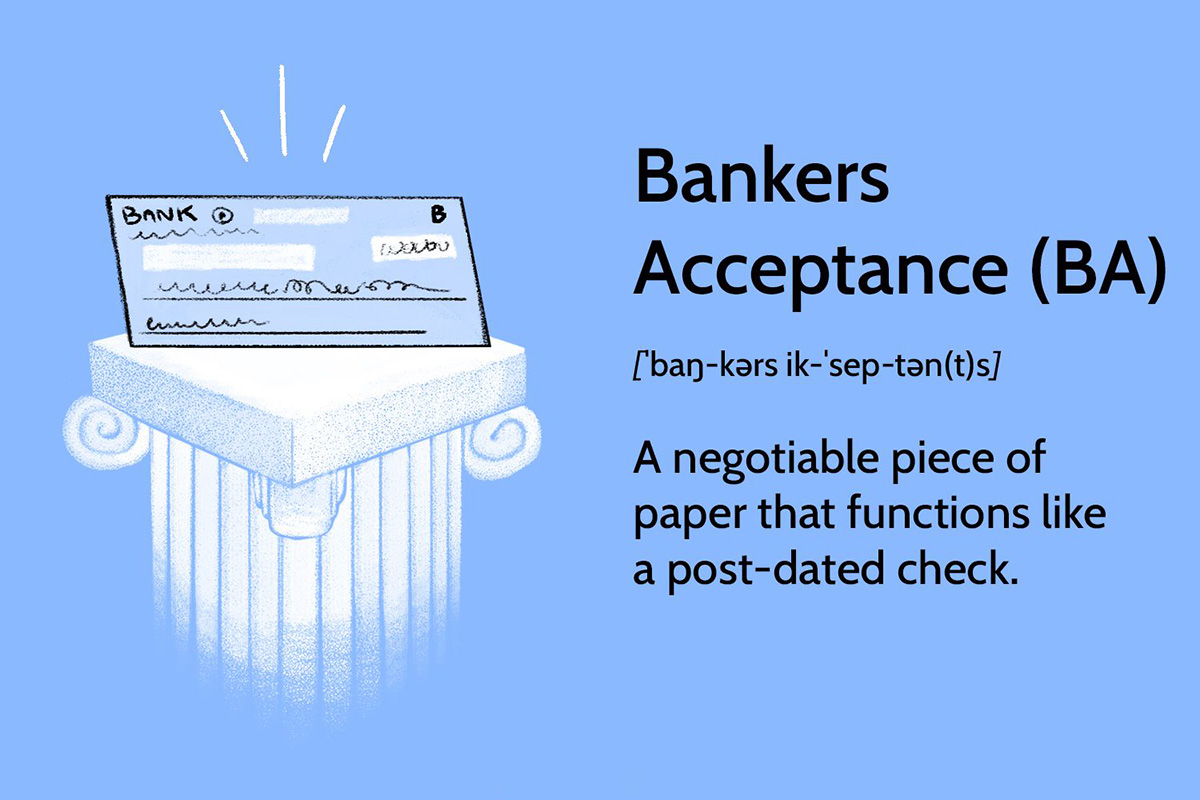

Finance
What Is The 11-Word Credit Loophole
Published: January 9, 2024
Discover the 11-word credit loophole that can revolutionize your financial situation. Unlock the secrets of finance and take control of your credit with this powerful strategy.
(Many of the links in this article redirect to a specific reviewed product. Your purchase of these products through affiliate links helps to generate commission for LiveWell, at no extra cost. Learn more)
Table of Contents
- Introduction
- Understanding Credit Loopholes
- Exploring the 11-Word Credit Loophole
- Benefits and Drawbacks of the 11-Word Credit Loophole
- How to Take Advantage of the 11-Word Credit Loophole
- Case Studies: Successful Examples of Using the 11-Word Credit Loophole
- Potential Risks and Precautions to Consider
- Is the 11-Word Credit Loophole Legal?
- Conclusion
Introduction
Welcome to the world of credit loopholes, where a seemingly innocuous set of 11 words has the potential to revolutionize your financial life. In an industry that often feels complex and overwhelming, the 11-word credit loophole offers a simple yet impactful solution that can help you gain control of your credit and achieve your financial goals.
But what exactly is a credit loophole, and how can it benefit you? In this article, we will delve into the world of credit loopholes and explore the power of the 11-word credit loophole. Whether you’re looking to improve your credit score, lower your interest rates, or access better financial opportunities, understanding and utilizing this loophole can make a significant difference in your financial well-being.
Before we dive into the specifics of the 11-word credit loophole, it’s important to have a basic understanding of credit loopholes in general. Credit loopholes are essentially legal strategies or tactics that allow individuals to take advantage of certain provisions or gaps in the credit system. These loopholes can help people improve their creditworthiness, access better rates, and ultimately save money.
The 11-word credit loophole, in particular, is a powerful tool that can be used to negotiate with creditors and potentially have negative items removed from your credit report. By strategically utilizing these 11 words, you can potentially erase damaging information and improve your credit score.
Imagine a scenario where you’ve made a few financial missteps in the past, resulting in negative marks on your credit report. These negative items can have a significant impact on your creditworthiness, making it difficult to obtain loans, secure favorable interest rates, or even be approved for certain rental properties. However, with the 11-word credit loophole, you may have the ability to challenge and remove these negative items, effectively giving your credit profile a much-needed boost.
While the 11-word credit loophole can be a game-changer for many individuals, it’s crucial to understand that it may not be suitable for everyone. Like any financial strategy, it’s important to weigh the benefits and drawbacks and make an informed decision based on your individual circumstances.
In the following sections, we will explore the intricacies of the 11-word credit loophole, its potential benefits and drawbacks, and provide guidance on how to effectively take advantage of this strategy. We will also share real-life case studies of individuals who have successfully utilized the 11-word credit loophole to improve their credit and achieve their financial goals.
So, if you’re eager to take control of your credit and unlock new financial opportunities, let’s dive deeper into the fascinating world of the 11-word credit loophole.
Understanding Credit Loopholes
Before we delve into the specifics of the 11-word credit loophole, let’s first build a solid understanding of credit loopholes in general. Credit loopholes are essentially strategies or tactics that individuals can use to their advantage within the credit system. These loopholes can help people improve their creditworthiness, access better rates, and ultimately save money.
One common misconception about credit loopholes is that they are illegal or unethical. However, it’s important to note that credit loopholes are legal and can be ethically employed to maximize the benefits of your credit and improve your financial well-being.
There are various types of credit loopholes, each targeting different aspects of the credit system. Some loopholes focus on improving credit scores, while others aim to negotiate lower interest rates or remove negative items from credit reports.
Improving credit scores is one of the main goals for many individuals seeking to enhance their financial standing. Higher credit scores open doors to better loan offers, lower interest rates, and improved financial opportunities. Credit loopholes can help in this endeavor by addressing specific factors that influence credit scores, such as payment history, credit utilization, and account age.
Lowering interest rates is another area where credit loopholes can provide significant benefits. A lower interest rate can save you substantial amounts of money over time, whether it be on a mortgage, car loan, or credit card. By strategically utilizing credit loopholes, individuals may be able to negotiate better terms with creditors and secure lower interest rates, resulting in long-term savings.
Removing negative items from credit reports is yet another area where credit loopholes can be advantageous. Negative items, such as late payments, collections, or bankruptcies, can have a detrimental impact on credit scores. However, by using specific tactics and strategies outlined within credit loopholes, individuals may have the opportunity to challenge and remove these negative items, improving their overall credit profile.
It’s important to note that credit loopholes are not a one-size-fits-all solution, and their effectiveness may vary depending on individual circumstances and the specific loopholes being utilized. While some individuals may experience significant improvements in their credit and financial standing through credit loopholes, others may find more limited results. It’s crucial to carefully evaluate your own financial situation and understand the potential benefits and drawbacks before implementing any credit loophole strategies.
In the next section, we will explore the 11-word credit loophole in detail, a specific loophole that has gained attention for its potential to remove negative items from credit reports. By understanding the intricacies of this particular credit loophole, you can determine whether it aligns with your financial goals and take the necessary steps to leverage its benefits.
Exploring the 11-Word Credit Loophole
The 11-word credit loophole is a powerful strategy that focuses on challenging and potentially removing negative items from your credit report. These negative items, such as late payments, collections, or even bankruptcies, can significantly impact your creditworthiness and make it challenging to qualify for loans or obtain favorable interest rates.
This credit loophole revolves around a specific wording that individuals can use when corresponding with creditors or credit bureaus. By strategically crafting a letter or email using these 11 words, you may have the opportunity to dispute and challenge negative items reported on your credit history.
The 11-word credit loophole can be summarized as follows: “I am requesting that this account be thoroughly investigated and verified.”
When communicating with creditors or credit bureaus using this precise language, you are effectively requesting a thorough investigation into the validity and accuracy of the negative item reported. This puts the burden of proof on the creditor or credit bureau to verify the information they have reported.
It’s important to note that the success of the 11-word credit loophole is not guaranteed. However, many individuals have reported positive outcomes, such as the removal of negative items or the correction of inaccurate information. The key lies in strategically leveraging this loophole and understanding how to navigate the credit dispute process.
To utilize the 11-word credit loophole effectively, it’s essential to follow a few key steps:
- Identify negative items on your credit report: Review your credit report to identify any negative items that you believe are inaccurate or should be challenged.
- Craft your dispute letter: Use the 11-word credit loophole language when writing your dispute letter. Clearly state that you are requesting a thorough investigation and verification of the negative item.
- Support your claim with evidence: Include any relevant supporting documentation, such as payment receipts or correspondence, that can strengthen your case.
- Send the dispute letter: Submit your dispute letter to the appropriate party, whether it’s the creditor or the credit bureau. Make sure to keep copies of all correspondence for your records.
- Follow up and be persistent: If you do not receive a response or resolution within a reasonable timeframe, follow up with the creditor or credit bureau. Persistence may be key in getting the desired outcome.
While the 11-word credit loophole has shown promise for many individuals, it’s important to approach it with realistic expectations. Not all negative items will be successfully removed, as the creditor or credit bureau may have valid proof of the reported information. Additionally, it’s crucial to continue practicing good credit habits and maintaining responsible financial behavior to build a positive credit history over time.
In the following sections, we will delve into the benefits and drawbacks of utilizing the 11-word credit loophole and provide guidance on how to effectively take advantage of this strategy to improve your credit standing.
Benefits and Drawbacks of the 11-Word Credit Loophole
Utilizing the 11-word credit loophole can potentially offer several benefits for individuals looking to improve their credit profile and financial standing. However, it’s important to weigh these benefits against the potential drawbacks to make an informed decision.
Benefits of the 11-Word Credit Loophole:
- Potential removal of negative items: One of the main advantages of the 11-word credit loophole is the possibility of having negative items removed from your credit report. This can result in an improved credit score and better financial opportunities.
- Financial savings: By successfully challenging and removing negative items from your credit report, you may be able to secure better interest rates on loans and credit cards. This can lead to significant long-term savings on interest payments.
- Improved creditworthiness: A cleaner credit report, free from negative items, can enhance your creditworthiness in the eyes of lenders and increase your chances of obtaining loan approvals and favorable terms.
- Elevated negotiating power: When your credit report reflects a positive and accurate picture of your financial history, you may have more leverage when negotiating with lenders or creditors for lower interest rates or better loan terms.
Drawbacks of the 11-Word Credit Loophole:
- No guarantee of success: While many individuals have reported positive outcomes with the 11-word credit loophole, it’s important to recognize that success is not guaranteed. Creditors and credit bureaus may have valid proof of the reported information, making it difficult to have negative items removed.
- Time-consuming process: Challenging negative items on your credit report can be a time-consuming process. It requires thorough research, documentation gathering, and consistent follow-up with creditors and credit bureaus.
- Potential for negative impact on credit: There is a slight chance that disputing negative items on your credit report may have a temporary negative impact on your credit score. This occurs when the item is confirmed as accurate, and it remains on the report.
- Limited applicability: The 11-word credit loophole is not applicable to all negative items on your credit report. Some items, such as accurate late payments or foreclosures, may not be successfully challenged using this strategy.
Understanding the benefits and drawbacks of the 11-word credit loophole is essential for making an informed decision regarding its usage. It’s crucial to evaluate your specific financial situation, the severity and accuracy of the negative items, and the potential impact on your credit before deciding to pursue this strategy.
In the next section, we will provide practical guidance on how to effectively take advantage of the 11-word credit loophole and increase your chances of success in challenging negative items on your credit report.
How to Take Advantage of the 11-Word Credit Loophole
If you’ve decided to explore the potential benefits of the 11-word credit loophole, it’s important to approach it strategically and follow certain steps to increase your chances of success. Here are some practical tips on how to effectively take advantage of the 11-word credit loophole:
- Review your credit report: Start by obtaining a copy of your credit report from each of the major credit bureaus – Equifax, Experian, and TransUnion. Carefully review your report to identify any negative items that you believe should be challenged. Ensure that the information being reported is accurate and up-to-date.
- Identify inaccurate or questionable items: Pay attention to any negative items on your credit report that you believe are inaccurate, incomplete, or questionable. These are the items you will target when utilizing the 11-word credit loophole.
- Craft your dispute letter: Compose a well-written dispute letter that clearly states your request for a thorough investigation and verification of the negative item in question. Use the precise language of the 11-word credit loophole to put the burden of proof on the creditor or credit bureau, emphasizing that you expect accurate and verifiable information.
- Include supporting documentation: Gather any supporting documentation that can back up your claim. This can include payment receipts, letters of correspondence, or any other evidence that proves disputable information to be inaccurate or incomplete.
- Send your dispute letter: Submit your dispute letter to the appropriate party, whether it’s the creditor or the credit bureau that reported the negative item. Make sure to send the letter via certified mail with a return receipt requested, so you have proof of delivery.
- Keep thorough records: Maintain detailed records of all correspondence and interactions related to your dispute. This includes copies of all letters, emails, and any other communication exchanged between you, the creditor, and the credit bureau. These records will be valuable if you need to escalate your dispute further.
- Follow up and monitor progress: Stay proactive by following up with the creditor or credit bureau to ensure they are actively investigating your dispute. Take note of any responses or updates received, and continue to engage in a timely manner.
- Be patient and persistent: Resolving credit disputes can take time, so it’s important to remain patient throughout the process. Be persistent in your efforts by following up regularly and escalating if necessary. Remember, perseverance can pay off in achieving a favorable outcome.
It’s worth noting that while the 11-word credit loophole has shown promise for many individuals, it is not a guaranteed solution. Results may vary depending on individual circumstances and the specific negative items being challenged. It’s essential to approach the process with realistic expectations and continue practicing good credit habits to maintain a positive credit profile.
In the next section, we will showcase successful examples of individuals who have effectively utilized the 11-word credit loophole to improve their credit scores and financial standing.
Case Studies: Successful Examples of Using the 11-Word Credit Loophole
Real-life examples serve as powerful evidence of the effectiveness of the 11-word credit loophole. These case studies showcase individuals who have successfully utilized this strategy to challenge negative items on their credit reports and achieve significant improvements in their credit scores and financial standing.
Case Study 1: John’s Credit Card Collection
John had a credit card collection account that was negatively impacting his credit score. Frustrated by the impact it had on his financial opportunities, he decided to use the 11-word credit loophole to challenge the validity of the collection account. He crafted a well-written dispute letter using the 11-word language, clearly stating his request for a thorough investigation and verification of the account.
Within a month, John received a response from the collection agency, admitting that they could not verify the account’s accuracy. As a result, they agreed to remove the collection account from John’s credit report. With the removal of this negative item, John’s credit score increased by 50 points, enabling him to qualify for better loan terms and obtain a lower interest rate on a new credit card.
Case Study 2: Sarah’s Inaccurate Late Payment
Sarah discovered an inaccurate late payment on her credit report that was negatively affecting her credit score. Determined to rectify the error, she followed the steps of the 11-word credit loophole. She sent a dispute letter to the creditor, highlighting the incorrect reporting of the late payment and requesting a thorough investigation and verification.
After a few weeks of correspondence, the creditor acknowledged their mistake and admitted that the late payment was indeed inaccurate. The late payment was promptly removed from Sarah’s credit report, resulting in a significant boost to her credit score. This improvement allowed her to secure a better interest rate on her auto loan and save thousands of dollars in interest payments over the life of the loan.
Case Study 3: Mark’s Challenged Bankruptcy
Mark faced the challenge of a bankruptcy filing on his credit report, which was limiting his access to credit and hindering his financial goals. Eager to improve his creditworthiness, Mark utilized the 11-word credit loophole to dispute the accuracy of the bankruptcy filing. He meticulously documented his case, gathering supporting documentation that showed the bankruptcy was incorrectly reported.
After multiple rounds of correspondence with the credit bureau and the bankruptcy court, Mark was successful in proving the inaccuracies surrounding his bankruptcy filing. As a result, the bankruptcy was expunged from his credit report, and his credit score saw a substantial improvement. This allowed Mark to obtain a mortgage with a lower interest rate and secure better terms on other credit accounts.
These case studies demonstrate the potential of the 11-word credit loophole to challenge negative items on credit reports successfully. However, it’s important to note that results may vary depending on individual circumstances and the specific negative items being disputed. It’s crucial to approach the process with patience, persistence, and a thorough understanding of the credit dispute process.
In the next section, we will discuss potential risks and precautions to consider before utilizing the 11-word credit loophole.
Potential Risks and Precautions to Consider
While the 11-word credit loophole can be an effective strategy for challenging negative items on your credit report, it’s important to be aware of the potential risks and take necessary precautions before initiating the dispute process. Here are some key considerations:
Potential Risks:
- Temporary negative impact on credit: It’s possible that disputing negative items on your credit report may result in a temporary decrease in your credit score. This can happen if the disputed item is confirmed as accurate and remains on your report. It’s essential to weigh the potential short-term impact against the long-term benefits gained from removing inaccurate or unjustified negative items.
- Time and effort required: Challenging negative items on your credit report can be a time-consuming and labor-intensive process. It involves thorough research, documentation gathering, and consistent follow-up with creditors and credit bureaus. Be prepared to invest the necessary time and effort to navigate the dispute process successfully.
- Success is not guaranteed: While the 11-word credit loophole has shown promise for many individuals, there is no guarantee of success. Creditors and credit bureaus may have valid proof of the reported information, making it challenging to have negative items removed. It’s important to manage your expectations and consider alternatives if the dispute process does not yield the desired outcomes.
Precautions to Consider:
- Thoroughly assess the accuracy of negative items: Before disputing negative items on your credit report, conduct a careful review to ensure their accuracy. This helps you determine which items are worth challenging and increases your chances of success.
- Keep detailed records: Maintain thorough documentation of all correspondence and interactions related to your dispute. This includes copies of dispute letters, responses from creditors and credit bureaus, and any supporting evidence. These records will be invaluable if you need to escalate your dispute further or seek legal assistance.
- Stay consistent and professional: When communicating with creditors and credit bureaus, maintain a professional and respectful tone. Be consistent in your messaging and adhere to the specific language of the 11-word credit loophole. Consistency and professionalism can improve your credibility and increase the likelihood of a favorable resolution.
- Be patient and persistent: Resolving credit disputes can take time, so remain patient throughout the process. Follow up regularly with creditors and credit bureaus to ensure your case is being actively investigated. If necessary, escalate your dispute and seek assistance from consumer protection agencies or legal professionals.
By understanding the potential risks and taking appropriate precautions, you can navigate the 11-word credit loophole with confidence. Remember that each credit situation is unique, and it’s important to evaluate your specific circumstances before initiating any dispute.
In the next section, we will address a common concern surrounding the legality of the 11-word credit loophole.
Is the 11-Word Credit Loophole Legal?
A commonly asked question regarding the 11-word credit loophole is whether it is legal to utilize this strategy to challenge negative items on your credit report. The answer is yes, the 11-word credit loophole is legal and falls within your rights as a consumer.
The 11-word credit loophole operates within the framework of consumer protection laws and regulations, which allow individuals to dispute and challenge inaccurate or unjustified information on their credit reports. The Fair Credit Reporting Act (FCRA), a federal law designed to promote accuracy and fairness in the credit reporting system, grants consumers the right to dispute information they believe to be incorrect or incomplete.
By using the 11-word credit loophole, you are exercising your right to inquire about the accuracy and validity of negative items reported on your credit history. This language is simply a strategic framework to make your request for a thorough investigation clear and concise.
It’s important to note that the legality of the 11-word credit loophole lies in how you utilize it. While the loophole itself is legal, it’s critical to follow proper procedures and adhere to the guidelines outlined in the FCRA. This includes providing accurate information, being truthful in your correspondence, and maintaining a professional tone when disputing negative items.
It’s also worth mentioning that the 11-word credit loophole is not intended to exploit or manipulate the credit system. Instead, it aims to provide individuals with a fair and effective means of challenging inaccuracies and ensuring that their credit reports reflect accurate information.
However, it’s essential to be cautious of companies or individuals that may claim to have secret or exclusive methods for removing negative items from your credit report. It’s best to avoid any strategies that involve deception, illegal activities, or the creation of a new credit identity. Such practices can have severe legal consequences and may further damage your creditworthiness.
If you are unsure about the legality of the 11-word credit loophole or have questions about specific credit situations, it’s advisable to seek guidance from professionals specializing in credit repair or consult with legal experts familiar with credit laws and regulations.
In the final section, we will provide a concluding summary of the 11-word credit loophole and its potential impact on your financial future.
Conclusion
The 11-word credit loophole offers a powerful opportunity for individuals to challenge negative items on their credit reports and potentially improve their credit scores and financial standing. By utilizing this strategic language in your correspondence with creditors and credit bureaus, you can request a thorough investigation and verification of the reported information, putting the burden of proof on them.
While the 11-word credit loophole is legal and has shown promise for many individuals, it’s important to approach it with realistic expectations. Success is not guaranteed, and the outcome may vary depending on individual circumstances and the specific negative items being disputed.
Before implementing the 11-word credit loophole, take the time to carefully review your credit report, identify inaccurate or questionable items, and gather supporting documentation. Craft a well-written dispute letter using the precise language of the loophole, and submit it to the appropriate parties. Maintain thorough records of all correspondence and follow up diligently to stay informed of the progress of your dispute.
While pursuing the 11-word credit loophole, be aware of potential risks, such as temporary negative impacts on your credit and the time and effort required to navigate the dispute process. Take precautions by assessing the accuracy of negative items, maintaining professionalism and consistency in your communication, and staying patient and persistent.
Legal considerations are also important. The 11-word credit loophole operates within the boundaries of consumer protection laws, such as the Fair Credit Reporting Act (FCRA). As long as you use the loophole appropriately and responsibly, exercising your right to challenge inaccurate information, it remains a legitimate and ethical method to improve your credit profile.
Remember, the 11-word credit loophole is just one tool in the credit repair arsenal. It should be used in conjunction with responsible credit management, good financial habits, and a long-term plan for building and maintaining a positive credit history.
Ultimately, the goal of the 11-word credit loophole is to empower individuals to take control of their credit and achieve their financial goals. By challenging negative items, potentially improving credit scores, and accessing better financial opportunities, you can pave the way for a brighter financial future.
So, if you’re ready to take charge of your credit and unlock new opportunities, consider exploring the potential of the 11-word credit loophole. Approach it with knowledge, caution, and a commitment to responsible credit management, and you may find yourself on a path to financial success.














